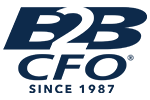
Statement Of Cash Flows
Posted on March 21, 2020 by Randal Suttles
I just hung up the phone with a client. I had told her to print the cash flow statement for the prior month. (She uses PeachTree. Quickbooks has an embedded cash flow statement as well. So do most financial software packages). She printed it, faxed it to me and we began discussing it. Her first words were: “I don’t even know what this is.” I told her it is probably the most important financial statement she has (she is a relatively new client so there will be much training and analysis for us to do).
I walked her through the report. It showed cash payments for equipment. She did not know the operations manager had purchased those particular pieces of equipment.
It showed a “use of cash” for the increase in accounts receivable. She did not understand how increasing accounts receivable is a use of cash. We discussed it quite a bit and she began to understand why the company was reporting so much income, but “we have no cash”, because it is being absorbed in increasing receivable balances.
The cash flow statement showed substantial owner draws. The Company is subchapter S, so after regular W-2 wages, the owners take distributions. She was not aware of the amounts they had been withdrawing. Time to review the personal spending situation.
The cash flow statement showed uses of cash caused by a drop in accounts payable. That she understood. No explanation necessary. When we pay bills, that’s a cash use, and cash goes down.
The cash flow statement showed payments on lines of credit and installment loans. Again, a use of cash and well understood by the owner.
This particular client is a service company, so inventory is not an issue. But, for wholesalers, retailers, and especially manufacturers, it is usually the changes in the inventory balances that require the most discussion with and monitoring by the owners.
The important point to the owner was not the theory behind sources and uses of cash, but that the cash flow statement is the place to look, and investigate, to find out what is going on with the cash in the business.
My client’s cash flow statement showed that the actual cash flow increase we had in the prior month was less than 20% of reported earnings. Not uncommon in growing companies. My client is beginning to understand and take actions to improve the cash flow. Steps like: increase sales, lower and limit expenses, faster collection of accounts receivable, equipment purchase budgets, management of vendor accounts to capture any discounts (but not pay too soon), negotiation of better payment terms on debt (lower rates, longer payments), and so forth.
Cash flow is the business’ life blood. The cash flow statement, reviewed regularly, is the only way to closely monitor, control, and improve the blood flow.
Get Started With Randal
Get Your own complimentary* Discovery Analysis™ from B2B CFO®
*Complimentary for qualified business owners
